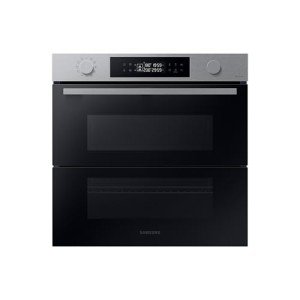What Is Oven Built In? Heck What Is Oven Built In?

The Rise of Built-In Ovens: A Seamless Approach to Modern Cooking
In contemporary kitchen areas, where style visual appeals mix seamlessly with performance, one home appliance stands out as a real game changer: the built-in oven. As homeowners and chefs alike continue to look for ingenious services that enhance their cooking experience, built-in ovens have ended up being progressively popular. This post checks out the benefits, considerations, and trends surrounding built-in ovens, highlighting why they are an important function in modern-day cooking areas.
What is similar web site -In Oven?
A built-in oven is a kitchen area home appliance created to be integrated into the cabinetry of a cooking area instead of standing alone. Unlike traditional freestanding ovens, which can be moved and positioned anywhere, built-in ovens can be found in various designs and sizes to fit particularly within designated spaces. Available in single or double setups, these ovens provide a structured look that complements contemporary cooking area designs.
Benefits of Built-In Ovens
1. Space-Saving Design
Among the most appealing advantages of built-in ovens is their space-saving style. By incorporating the oven into cabinetry, you can maximize valuable counter and floor area. This is especially helpful in smaller cooking areas, where making the most of space is vital. Built-in ovens can be installed at eye level, making them more available and lowering the requirement to flex down.
2. Aesthetic Appeal
Built-in ovens contribute to a sleek and cohesive kitchen area style. Available in various surfaces-- such as stainless steel, black, white, and customized cabinets-- they can mix perfectly into the general design. This visual appeal boosts the cooking area's visual consistency and elevates the area, developing a contemporary and sophisticated atmosphere.
3. Enhanced Functionality
Lots of built-in ovens come equipped with innovative cooking technologies, such as convection cooking, steam ovens, and smart features. These improvements permit versatile cooking alternatives, making it easier to achieve professional-level results in the house. Smart built-in ovens can even connect to Wi-Fi, enabling users to control the oven from another location, get notices, and access a range of cooking programs and dishes.
4. Improved Ventilation
Due to the fact that built-in ovens can be integrated with kitchen area hoods and ventilation systems, they can assist preserve much better air quality and lower cooking odors. This is particularly substantial for those who like to cook with aromatic spices and ingredients, as an efficient ventilation system can keep the cooking area comfortable and inviting.
5. Modification Options
Built-in ovens provide a large range of customization options to fit individual cooking designs and requirements. From professional-grade appliances with several cooking modes to compact styles for smaller sized kitchen areas, property owners can choose the oven that fits their particular requirements. Many producers likewise provide adjustable front panels, permitting you to match the oven's look to your kitchen cabinetry for a truly combined look.
Considerations When Choosing a Built-In Oven
While built-in ovens have many advantages, there are essential factors to consider to bear in mind before making a purchase:
1. Cost
Built-in ovens normally feature a higher cost than their freestanding counterparts due to their style and setup requirements. It's crucial to factor in both the expense of the oven and any extra expenses associated with cabinets modifications or installation.
2. Installation Requirements
Setting up a built-in oven often needs expert support, particularly if you need to customize existing cabinetry. Ensure that you think about any costs associated with setup, including labor and potential kitchen cabinetry adjustments.
3. Size and Dimensions
Before purchasing a built-in oven, measure the designated space accurately to make sure a correct fit. Built-in ovens can be found in different sizes and setups, so picking one that aligns with your needs and kitchen area style is essential.

4. Lifestyle and Usage
Consider your cooking routines and requires when picking a built-in oven. If you often host big events, a double oven may be more helpful. On the other hand, if you have a compact kitchen, a single-wall oven may be adequate.
Patterns in Built-In Ovens
The cooking area appliance market is continually progressing, and built-in ovens are not exempt from emerging patterns. Some present trends include:
Smart Technology Integration: With the rise of clever home innovation, built-in ovens now typically include connection options. This enables users to keep track of cooking development and change settings via mobile apps.
Energy Efficiency: As sustainability becomes a concern, many producers are buying energy-efficient built-in ovens that reduce energy consumption while preserving performance.
Multi-functional Designs: Built-in ovens now use features such as air frying, sluggish cooking, and steaming, offering adaptability that meets a wide range of cooking approaches.
Conclusion
Built-in ovens unquestionably represent a perfect mix of design, function, and convenience in today's cooking areas. As more homeowners select this modern solution, the focus shifts to producing a cooking space that is as visually pleasing as it is practical. Whether you are constructing a new home or remodeling your kitchen area, considering a built-in oven might raise your culinary experience and change your kitchen into a stylish and practical sanctuary. With a selection of alternatives readily available and continuous developments in innovation, built-in ovens stay a standout option for both amateur cooks and cooking enthusiasts alike.
